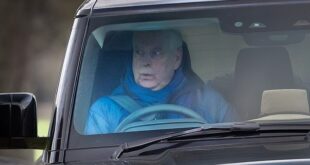This trip report was meant to be a quick rundown of a weekend getaway. It has grown to be a bit verbose and flowery – but I guess it’s my prerogative as a writer to make it that way. You’ll show me your appreciation or lack of it with the upvotes anyway. So apologies, this is going to be long.
My wife and I decided to spend two days in Victoria’s Grampians ranges. It is a 400,000 acre national park with long mountain ranges made of sandstone. It would be our first road trip of the year (the rest of it spent in lockdown), and our first with our new EV.
We have a 2021 Model 3 SR+ (July Build) with a 55kW LFP battery and a heat-pump. It is a beautiful dark blue-grey called “Midnight Silver Metallic” and has the standard black interior package with 18” Aero wheels (which I absolutely love the look of on the stock Michelin Pilot Sport 4 tyres). It started this road trip with about 2,100km on the odometer.
Stage1: Melbourne (CBD) to Ballarat Via Western Highway (M8)
Length: 1h:19m, 114km
Charge level: 72% to 33% (-39%), 19.19kWh used
Efficiency: 168Wh/km
Setting off for the day around 9am, we were greeted with cloudy conditions which threatened rain, and mild 16C temperatures. The car was charged to about 72% as our apartment has a car stacker and we can’t charge at home.
Knowing that we were going to need a charge in Ballarat (I had planned the route out roughly in A Better Route Planner – a tool I highly recommend), I had set the navigation to the Ballarat Supercharger in Wendouree rather than the Chargefox ultra-rapid charger I wanted to go to.
This is so that the battery goes into “pre-conditioning” mode and heats up – this way you get fast charging immediately rather than the charge going toward heating your battery for the first 20 minutes.
I really wish Tesla would add third-party chargers to its navigation system and do this automatically for us, or at least give us the option to manually pre-condition the battery.
We made our way through the standard morning traffic out of the CBD and toward Melbourne’s west, weaving through the massive B-doubles and road-trains (i.e. a 9-axle “A-double” with two 2x40ft containers) before getting on to the Western Highway (M8).
There are a couple of things about the first part of this journey that stand out: the road noise, and the chimes and bongs.
The Western Highway is a 4 lane dual carriageway with a speed limit of 110 km/h. The surface is patchy and coarse, designed to withstand the abuse from huge heavy trucks, but still succumbing to the wear and tear that comes with 70 tonnes worth of vehicle driving over it.
This may come as a surprise to Europeans (and maybe Americans), but Australian roads outside of cities are of relatively poor quality because of the distances they need to cover, the low population density, and the predominantly agricultural/industrial use to which they are subjected. The primary surface material used is called “Chipseal” which is cheaper and hardier than high-quality bitumen.
On this road, the Tesla Model 3 oscillated between being silent on the standard bitumen and newly paved sections where it felt truly serene, to being quite loud and disruptive on the Chipseal sections. I simply reject the notion that because there is no engine noise you notice the road noise more; this car is simply not well insulated enough.
The lack of insulation doesn’t just drive up the ambient noise in the cabin, but the overall acoustic quality of the cabin. The sound system becomes tinny and harder to hear, with lows drowned out by the hum of the tyres. Conversation becomes more of a yelling match than a sophisticated dialogue. And you can’t wait to slow down in a township so you can hear yourself think again.
The second maddening noise-related complaint I have is the number and chimes and bongs that come from the car when engaging and disengaging the Autopilot, something I had to do a lot on this section as we moved between the lanes, avoiding slow cars in the left but ensuring we were good road citizens and kept the right open for overtaking.
It also alerts you if a car passes too closely or you veer close to the centre lines. Overall, there is too much auditory input from the car – passengers feel like they are in a heightened state of alarm the whole trip.
We averaged around 168Wh/km on this stretch, a little bit of a shock to me as I had been very used to seeing 120-140Wh/km on the trip computer around town and even on my 20km to work (which has some highway driving).
But here it was resolutely above 150 Wh/km the entire way, and I came to the realisation that the 422km estimated range was unrealistic and we may have to think more carefully about range than I had anticipated.
Charge1: Chargefox Ballarat
Charger type: 350kW, CCS2
Charge time: 0h:31m
Charge level: 33% to 100% (+67%), 36.5kWh added
Cost: 40c/kWh (20% RACV discount) (Total cost: $11.32)
We arrived at Ballarat late in the morning, slightly alarmed at the 33% charge remaining. Ballarat was the centre of the Australian gold rush, a small city of 100,000 people with beautiful Victorian era architecture; it is grand despite its modest size because of the enormous wealth that the ground nearby offered to 19th century miners.
Turning the navigation from the Tesla Supercharger to the Chargefox one in the east of the city, we did a slow scan around a Big W parking lot to find the familiar bank of orange and white chargers.
The charging station has two ultra-rapid 350kW chargers, and two slower 50kW chargers. These were installed as a part of a Royal Automotive Club of Victoria (RACV) investment in 2018 of 21 chargers across regional Victoria (wouldn’t it be nice if the government did something like this?). Both CCS2 and CHAdeMO adapters are available.



Chargefox has its own app, which works fantastically well. I plugged the CCS2 cable into the car, went into the app, press start charging and away it went. The charges go directly to my credit card so there is no need to actively do anything payment-related when you charge.
The charger was a 350kW one (I don’t actually think there are any cars on the market that can max that out), and our Model 3 started sucking electrons at around 115kW peak, before gradually reducing after the car reached ~54% charge. We plugged in at 11am and it was at 100% at around 11:30am.
So 30 minutes (enough for us to run into a supermarket for some snacks), and $11.32 (less than our snacks cost) later, we were back on the road feeling refreshed. It’s not the 400km in 15 minutes Chargefox promises, but it was about as painful as stopping at a fuel station McDonald’s and a lot more healthy.
Stage 2: Ballarat to Pomonal/Halls Gap Via A8 and C222
Length: 1h:28m, 131km
Charge level: 100% to 61% (-39%), 19.75kWh used
Efficiency: 150Wh/km
The stretch of road next was the A8: it was boring and with a similarly annoying surface to the road from Melbourne to Ballarat. However, this road ended at Ararat – a much smaller Victorian era boomtown around 100km away – and we started driving down the C222.
The C222 is a two lane, fast-flowing road through flat-ish fields with very little traffic. With the Grampians (or Gariwerd) ranges in clear view on the horizon, this was an enjoyable drive – one where you can leave your foot on the accelerator pedal the whole time.
Hitting 120 km/h was certainly possible (and I did on a few occasions given the complete lack of police or any other motorist activity), but I was also content with just enjoying the car at a slower pace.
One thing that did become clear is that the HVAC system in the Model 3 works pretty hard to keep the cabin cool. We had the climate control set on 19C – I know, a little naughty – and the outside temperature was a modest 26C.
This of course is very standard for a south-eastern Australia in late spring, and is likely a good 15C cooler than a typical hot summers’ day. Even then, the HVAC was blowing hard and making a racket. We had to turn it off ‘Auto’ mode and put the fan down just so we could have a conversation.
Another Tesla feature wish list: ‘Auto HVAC with maximum fan speed’.
Stage3: Halls to Gap to Mackenzie Falls and Borokoa Lookout
Halls Gap is the gateway to the northern Grampians, and where most people base themselves for easy access to the key attractions in the area. It’s a small town in the Fyan Valley, dotted with ice-cream parlours and caravan parks.
We arrived and didn’t stay long, but rather made our way to the mentioned attractions, namely MacKenzie Falls, one of the largest waterfalls in Victoria, and the Boroka Lookout. I won’t say much about the Boroka Lookout because I’m not sure I could do it justice – simply that it is one of the most beautiful vistas I have seen in Australia.
I took some panorama shots (I’ll link one in my blog) but seeing the size and scale of the Victorian plains below and Lake Bellfield to the right was wondrous.



Our next stop was meant to be The Balconies, another lookout spot, except this is when we checked our charge level. It had fallen to 42%, and we had used an astonishing 265Wh/km of charge over the previous leg.
Now to be clear, there was 616m total elevation gain from Halls Gap to Boroka, and I hadn’t been light-footed coming up the mountain. Nonetheless, this was the first time we felt like we needed to alter our plans to accommodate the vehicle.
With that in mind, we decided to head to our final destination for the day: Dunkeld.
Stage 4: Boroka lookout to Dunked Via C216
Length: 1h:02m, 77km
Charge level: 42% to 24% (-17%), 8.38kWh used
Efficiency: 109 Wh/km
The road from Halls Gap to Dunkeld is one of my favourites in Australia. The surface is good, the turns are smooth and flowing, and it is mercifully empty. It’s one of those roads that makes you want to put your car in sport mode, stop talking to your passenger, and focus on getting some real speed around the bends.
So that’s what I did; the Model 3 was put into Sport steering mode and I tried to put it through its paces.
The ability to drive ferociously with entirely one pedal, without a need to brake as I came up to the corners or downshift was a little bizarre at first, but you do get used to it. However, relying on regen braking requires your braking zone and foresight to be accurate.
A few times I expected I’d get enough regen braking power only to have to engage my actual brake pedal to get my speed down. Not that I needed to very much…I could take these flowing corners at 90km/hr comfortably, and at more than 100km/hr to test the cars driving dynamics out.
And what are those dynamics like? Well, not too bad. The steering actually feels well-weighted and responsive at high speed; it loses the vagueness it sometimes has at slower speeds. However, you do become acutely aware that this car has its dynamic limits, and it tells you about them early and well before you have tested them.
There’s a point in the turn when you feel the weight of the car (a hefty 1700kg) shift, and it is a little scary!
Overall, this is about as close to a track day I’m ever going to get on a public road. And it was really fun in the Model 3. Would I prefer to be shifting gears and listening to an engine screaming its way to a redline? Yes, probably.
Do I think a 3 series would feel more connected and lighter on its feet? Yes. But nonetheless, this was an exhilarating drive and I loved it.
The best part? As we rolled closer to the hotel, we were greeted by a number of grey kangaroos and emus crossing the road. It was great to be able to roll along silently and watch these beautiful creatures. A good reminder to be careful on the roads in Australia at dawn and at dusk…but an equally good reminder of the reason to own an EV in the first place – preserving this amazing planet.



Charge 2: Royal Mail Hotel
Charger type: 22kW, Tesla Type 2
Charge time: 3h:29m
Charge level: 25% to 100% (+75%), 41.1kWh added
Cost: Free
We arrived at our “destination” for the trip tired and slightly relieved with about 25% charge left in both the car and our body batteries. The drive had been thrilling, but we were looking forward to getting rid of some of that range anxiety.
There are more and more hotels in Australia now offering charging infrastructure, and they are usually identifiable on the Plugshare app. We had made a point of finding one that did, and it just coincided that it happened to be one of the hotels we had been meaning to visit: The Royal Mail hotel.
Owned by a wealthy solicitor from Melbourne since the 1980s, but having been one of the first establishments in Dunkeld in the 1800s and the only of the original five to remain standing, the Royal Mail Hotel is better known for its restaurants than accommodation options.
Before any of that, however, we were keen to get a charge in. The problem was all of the EV charging stations were ICE’d. We asked at reception and the gracious staff scurried off to ensure one of the bays was freed up for us. It is clear that they knew this was a key drawcard to the hotel (which might I add, at more than $300 per night, was not cheap).
We plugged in, and our Model 3 received a steady 22kW stream of energy and was topped up before dinner. For free. Can’t ask for more than that.
We were treated to a cottage at its Mt Sturgeon property, a bluestone dating back a hundred years that had a real rustic feel inside. On the foot of the mountain, it offered hugely enjoyable countryside as its garden any time of the day, but especially in the evening when the bird noises were everywhere and the kangaroos and occasional emu were a treat to watch. Complete with a fireplace, this is one hotel we would be keen to come back to.



Stage 5: Dunked to Ballarat Via B160 and C296
Length: 1h:41m, 146km
Charge level: 100% to 51% (-49%), 24.5kWh used
Efficiency: 168 Wh/km
The C296 winds its way through the Western District of Victoria, through fields of bright yellow canola, brown wheat, and green pastures for sheep and at this time of year, spring lambs. It is an empty route, paved but not really marked; wide enough for two cars but without distinct lanes.



This drive was largely unremarkable, but it was the one time I became most aware of the firm suspension tune on the Model 3. On a road like this one, with patched-up potholes every few metres, we became very accustomed to gritting our teeth as the car rattled over the poor surface.
This is a heavy car, and Tesla has clearly had to firm up the suspension to make the handling feel sporty. Even though my particular car has 18” wheels, the ride is still harsh. I can’t imagine what it must be like on the 20” uberturbines of the Performance model.
As we rolled past the picturesque St John’s Uniting Church in the small village of Streatham, I imagined what it might be like to drive this car over the pristine roads in Europe. Perhaps that’s where firmly tuned cars are best enjoyed. In Australia, perhaps we deserve the spongier experience – at least your spine stays intact.
Charge 3: Chargefox Ballarat
Charger type: 350kW, CCS2
Charge time: 0h:27m
Charge level: 51% to 100% (+49%), 26.8kWh added
Cost: 40c/kWh (20% RACV discount) (Total cost: $7.96)
Rolling back into Ballarat – and yes, we did have to pre-heat the battery on the way by navigating to the Supercharger first – we stopped again at our trusty Chargefox station. It was a relatively uneventful visit – 27 minutes got us topped up completely at a meagre cost of around $8. We did however meet another couple from Melbourne who had driven their 2 day old Nissan Leaf there.
The lady was middle-aged, curly-haired and frazzled trying to get the CCS2 connector into the front charge port of the car. Her husband stood there, arms crossed, clearly unimpressed by both the car and the faff. She asked me if I knew how the chargers worked and I patiently explained that she needed the CHAdeMO connector instead, and that she should use the 350kW charger rather than the 50kW charger.
Once she had moved her car and plugged in, I had a good chat with them about the car, which they realised after they had bought it, only had a range of around 250km.
It made me think about how far we still have to go on this electric vehicle educational journey. Charge adapter type and range are just not things the usual public thinks about very much. It is stressful owning an electric car at the moment – the change management piece will take time, and us EV aficionados can’t speed it through just because we find it interesting and easy. Most people don’t join EV subreddits or follow EV websites obsessively.
After the husband explained to me that his four-wheel drive got 900km on a diesel tank and he couldn’t understand why anyone would want to go through all the trouble of an electric vehicle, we headed onward, and toward home.
Stage 6: Ballarat to Melbourne (Essendon) Via M8
Length: 1h:12m, 110km
Charge level: 100% to 72% (-28%), 14.0kWh used
Efficiency: 128 Wh/km
The ride home was a good time for reflection. This time I sat in the left (slow) lane, put the Autopilot on at 110km/hr, in reality rarely travelling at more than 100km/hr as the traffic ambled back to the city after a weekend away. In the haze we could see the tall skyscrapers of the Melbourne CBD – back to reality.
I laid a gentle hand on the steering wheel, and the car did all of the work. This is when the Model 3 did what it does best – just makes everything feel effortless. The road surface was a little bit smoother and the car wafted along, soaking up the miles without much input from me at all. It was a trip that was a bit more than an hour long, but I could have sat there for three without trouble.
Over this weekend, we had travelled around 750km (this write up covers about 650km of it), over 17 drives, with around 10 hours at the wheel. I had saved around $80 in fuel and I had used about 114kWh, which had cost me around $25. My average efficiency was 154 Wh/km.
There are things about the Model 3 that aren’t perfect. But I really enjoyed this road trip, and beyond being comfortable or dynamically thrilling, it had been interesting. It proved to me that if we just let it, the EV future could be a beautiful one. Filled out lovely road trips in the country, without much more fuss than they had been previously.
This article was originally published on the blog Brain Revisited. Reproduced with permission.
Source link



